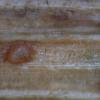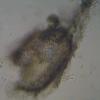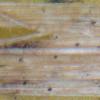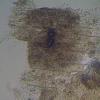
09-02-2012 17:17
Bonjour à tous,Quelques petites récoltes faites

08-02-2012 18:25
Bonjour à tous,Cela fair plusieurs fois que je ne

08-02-2012 17:48
Bonjour à tous,Alors là... Un Gibberella ou truc

08-02-2012 18:07
Récolté le 13.08.11, à la face inférieure de f

08-02-2012 18:47
Bonjour à tous, encore une récolte de l'an derni

07-02-2012 15:54
Bonjour à tous,Une série d'ascos et de coelomyc�

07-02-2012 16:15
Bonjour à tous,Aulnaie à sphaignes, sur bois imb
S/ Arrhenatherum elatius
Luc Bailly,
09-02-2012 17:17
Quelques petites récoltes faites chez moi, surtout des coelomycètes, en cherchant de petits ascos sur les herbes mortes.
17.07.11: Deux récoltes sur feuilles d'Arrhenatherum elatius. Roche-à-Frêne, Manhay, prov. Luxembourg, B., alt. 205 m.
Regroupées en un sujet pour ne pas encombrer le forum.
N°1
Pycnides éparpillées ou en groupes, immergées, 0.2-0.3 mm, ostiole visible et érompante. Couleur ocre roussâtre.
Péridium mince, en fait quasi hyalin ou très pâle, text. ang. Hyménium disparu, la pycnide est un sac à conidies.
Conidies 1-septées, hyalines, guttulées, huile = 2, (8.5)10-12.5(13.5) µ.
Un Ascochyta?
Luc Bailly,
09-02-2012 17:28
Re : S/ Arrhenatherum elatius
N°2
Coelo. Pycn. brun moyen, aplaties, immergées dans les feuilles, 0.2 mm, ostioles érompantes. la couleur est plus sombre à la périphérie et surtout autour des ostioles parfois multiples, comme sur la photo.
Péridium à texture pseudoparenchymateuse, brun olivâtre, cellules X 2-3 µ, peu épaissies.
Conidiophores ventrus, guttulés, hyalins ou très pâles, portant 1 ou 2 conidies, 7-11 x 2-3 µ.
Conidies hyalines, en bâtonnets, guttulées, 3.5-8 x 1.2-1.8 µ.
Pas d'idée.
Amitiés - LUC.
Coelo. Pycn. brun moyen, aplaties, immergées dans les feuilles, 0.2 mm, ostioles érompantes. la couleur est plus sombre à la périphérie et surtout autour des ostioles parfois multiples, comme sur la photo.
Péridium à texture pseudoparenchymateuse, brun olivâtre, cellules X 2-3 µ, peu épaissies.
Conidiophores ventrus, guttulés, hyalins ou très pâles, portant 1 ou 2 conidies, 7-11 x 2-3 µ.
Conidies hyalines, en bâtonnets, guttulées, 3.5-8 x 1.2-1.8 µ.
Pas d'idée.
Amitiés - LUC.










